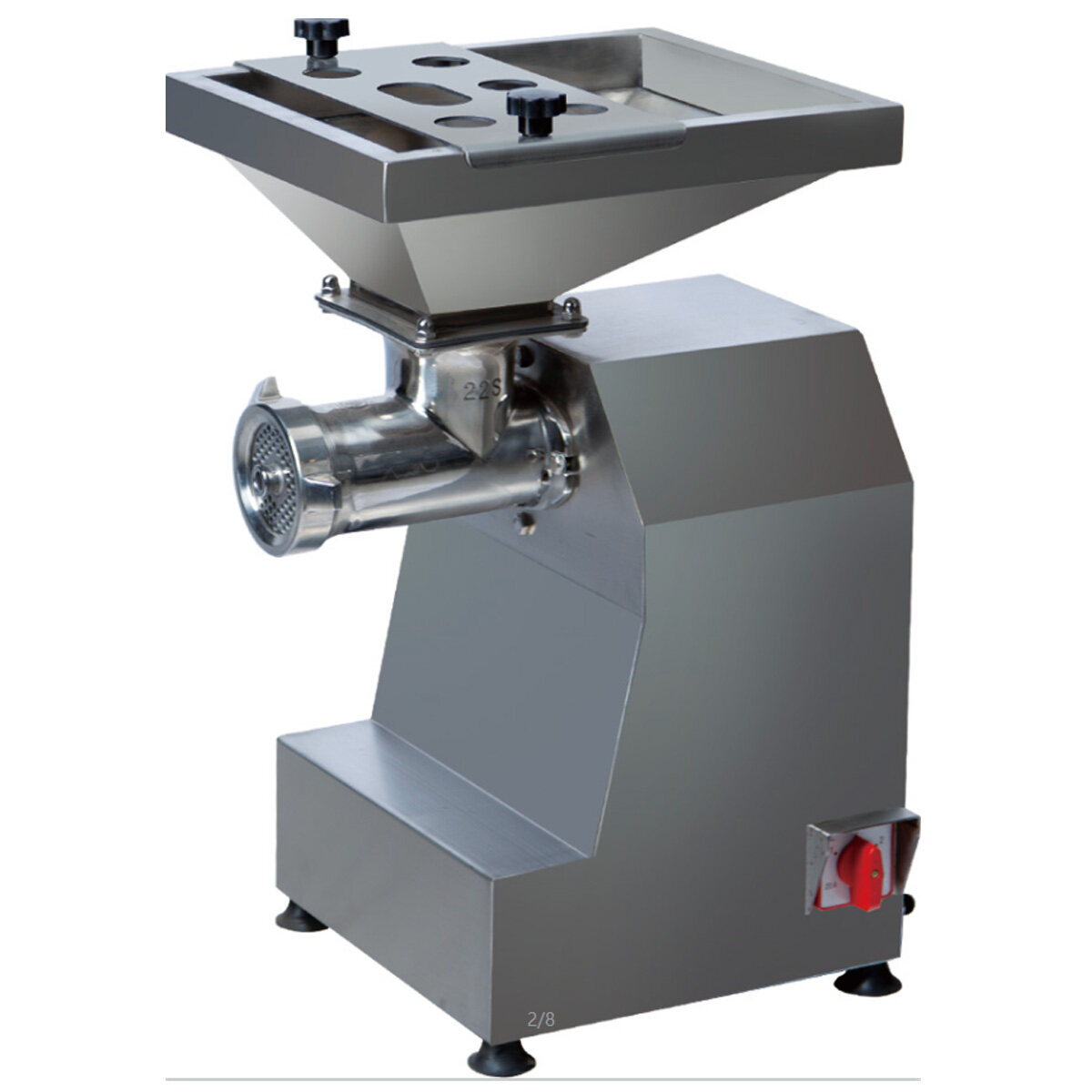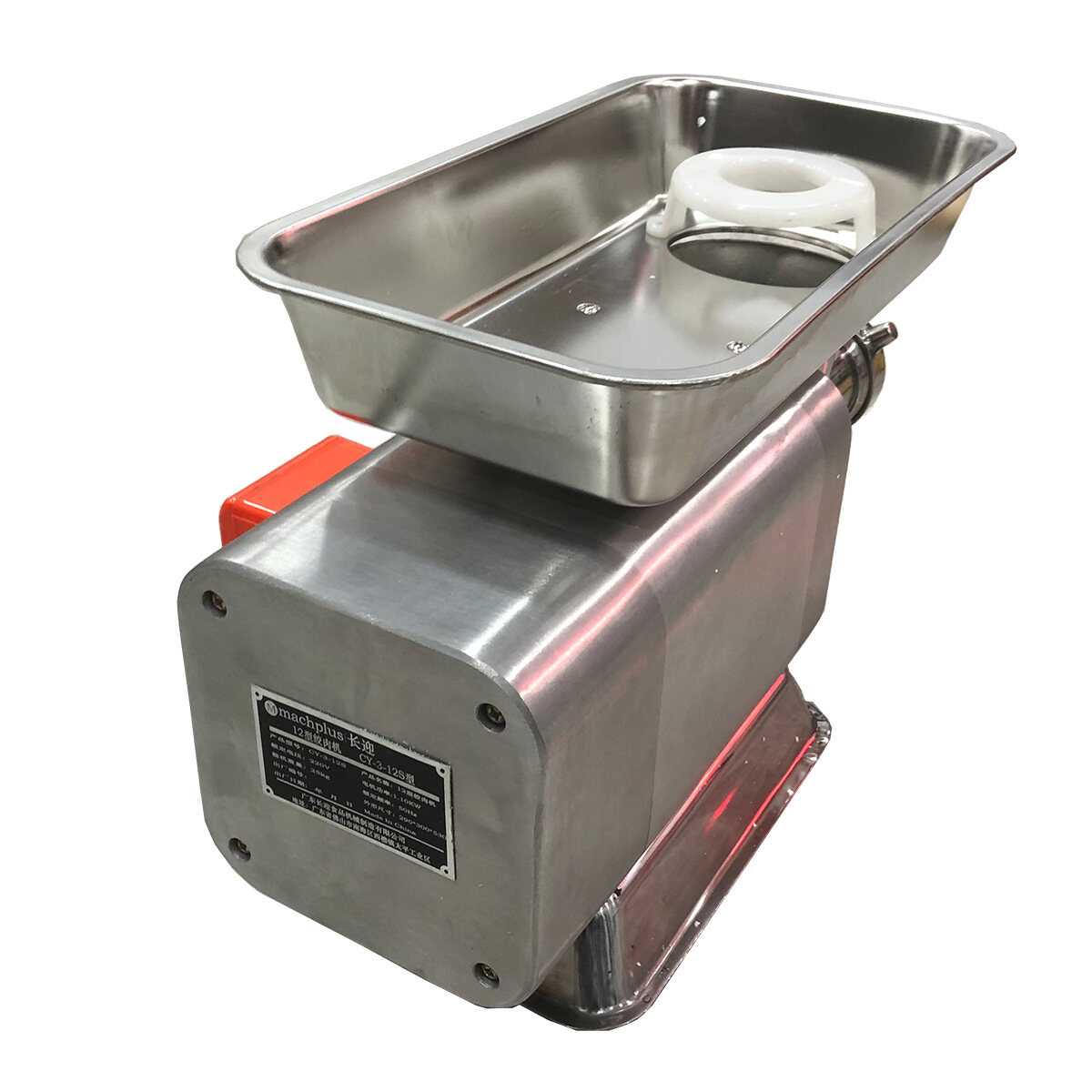Email format error
Email cannot be empty
Email already exists
6-20 characters(letters plus numbers only)
The password is inconsistent
Email format error
Email cannot be empty
Email does not exist
6-20 characters(letters plus numbers only)
The password is inconsistent


In the dynamic landscape of food processing, industrial meat mincers emerge as indispensable tools, facilitating the transformation of raw meat into finely minced products. From large-scale meat production facilities to quaint butcher shops, these machines play a pivotal role in meeting the diverse demands of consumers. This comprehensive guide aims to dissect the nuances of industrial meat mincers, unraveling their functionalities, benefits, maintenance protocols, and strategies for optimizing performance.
Understanding Industrial Meat Mincers
Industrial meat mincers, commonly referred to as meat grinders, represent robust apparatuses engineered to process substantial quantities of meat efficiently. These machines typically comprise a sturdy hopper for meat insertion and a rotating mechanism outfitted with sharp blades or discs that pulverize the meat into desired textures. The minced meat is then extruded through a nozzle, primed for subsequent processing or packaging.
Key Features and Components
Delving deeper into the anatomy of industrial meat mincers reveals a myriad of features and components essential for their operation and longevity:
- Heavy-Duty Construction: Central to the durability and resilience of the meat mincers is their construction from high-grade materials, most notably stainless steel. This choice of material not only ensures longevity but also confers resistance to corrosion, crucial in environments prone to moisture and acidic substances.
- Powerful Motor: The beating heart of a meat mincer resides in its motor, typically engineered to deliver robust performance under continuous operation. These motors boast formidable power ratings, enabling them to effortlessly process large volumes of meat without succumbing to overheating or performance degradation.
- Versatile Cutting Mechanisms: A hallmark of advanced meat mincers lies in their versatility, manifested through interchangeable cutting blades and discs. This feature empowers operators to tailor the mincing process, producing a spectrum of textures and consistencies to suit diverse culinary applications.
- Safety Measures: Recognizing the inherent risks associated with operating industrial machinery, manufacturers integrate an array of safety features into meat mincers. Emergency stop buttons, overload protection mechanisms, and interlocking systems serve as bulwarks against accidents, safeguarding the well-being of operators and bystanders alike.
Applications in Food Industry
The versatility of industrial meat mincers renders them indispensable across various sectors of the food industry:
- Meat Processing Plants: Within the confines of sprawling meat processing plants, the meat mincers orchestrate the initial stages of meat preparation, transforming primal cuts into uniform ground meat. This processed meat serves as the raw material for an assortment of culinary delights, ranging from sausages to meatballs.
- Butcher Shops: On a smaller scale, butcher shops harness the capabilities of the meat mincers to provide patrons with freshly ground meat, tailored to their specific preferences and dietary requirements. This bespoke service not only augments customer satisfaction but also bolsters the reputation of the establishment.
- Restaurant and Catering Services: In the realm of gastronomy, the meat mincers find refuge in the kitchens of restaurants and catering services, where they partake in the preparation of myriad meat-based dishes. Whether crafting succulent meatloaves or savory Bolognese sauces, these machines uphold the standards of consistency and quality synonymous with fine dining.
Optimizing Performance
To unlock the full potential of industrial meat mincers and ensure sustained operational excellence, adhering to best practices is imperative:
1. Proper Maintenance: At the nucleus of optimal performance lies a regimen of regular maintenance, encompassing meticulous cleaning and lubrication of the mincer's components. This proactive approach not only obviates the accumulation of meat residues but also mitigates the risk of mechanical failures arising from friction-induced wear and tear.
2. Temperature Control: The delicate interplay between heat and machinery underscores the importance of temperature control in industrial meat mincers. Maintaining optimal operating temperatures safeguards against motor overheating, preserving its longevity and efficiency.
3. Sharp Blades: Sharp blades constitute the linchpin of effective mincing, dictating the precision and uniformity of the end product. Regular inspection and sharpening of blades, coupled with proper alignment, ensure consistent results and minimize wastage.
4. Quality Control: Central to the ethos of food safety is the implement
ation of rigorous quality control measures throughout the mincing process. From stringent checks on raw meat quality to adherence to hygienic practices during handling and processing, every facet of production warrants meticulous scrutiny to forestall contamination and uphold consumer trust.
5. Training and Education: The human element remains pivotal in the realm of industrial meat mincers, underscoring the importance of comprehensive training for operators. Equipping personnel with the requisite knowledge and skills not only fosters operational proficiency but also cultivates a culture of safety and accountability within the workplace.
Future Trends and Innovations
Looking ahead, the trajectory of industrial meat mincers is poised for innovation and refinement, spurred by advancements in technology and evolving consumer preferences:
- Automation: The integration of automation and robotics promises to revolutionize the landscape of meat processing, streamlining operations and enhancing productivity. Automated meat mincers equipped with adaptive algorithms and sensory feedback mechanisms are poised to redefine the boundaries of efficiency and precision.
- Smart Monitoring Systems: The advent of IoT-enabled monitoring systems heralds a new era of predictive maintenance and performance optimization. Real-time data analytics coupled with remote monitoring capabilities empower operators to preemptively identify issues and preemptively address them, minimizing downtime and maximizing uptime.
- Hygienic Design: As concerns surrounding food safety and hygiene continue to gain prominence, the design ethos of industrial meat mincers is undergoing a paradigm shift. Emphasis is placed on the integration of hygienically designed surfaces and components, characterized by seamless contours and minimal crevices conducive to thorough cleaning and disinfection.
Conclusion
Industrial meat mincers epitomize the fusion of precision engineering and culinary craftsmanship, serving as stalwarts in the realm of food processing. By unraveling the intricacies of their functionalities, embracing best practices in maintenance and operation, and embracing emerging trends and innovations, businesses can harness the full potential of these machines. In doing so, they not only bolster operational efficiency and quality standards but also remain poised to navigate the ever-evolving landscape of the food industry with agility and resilience.